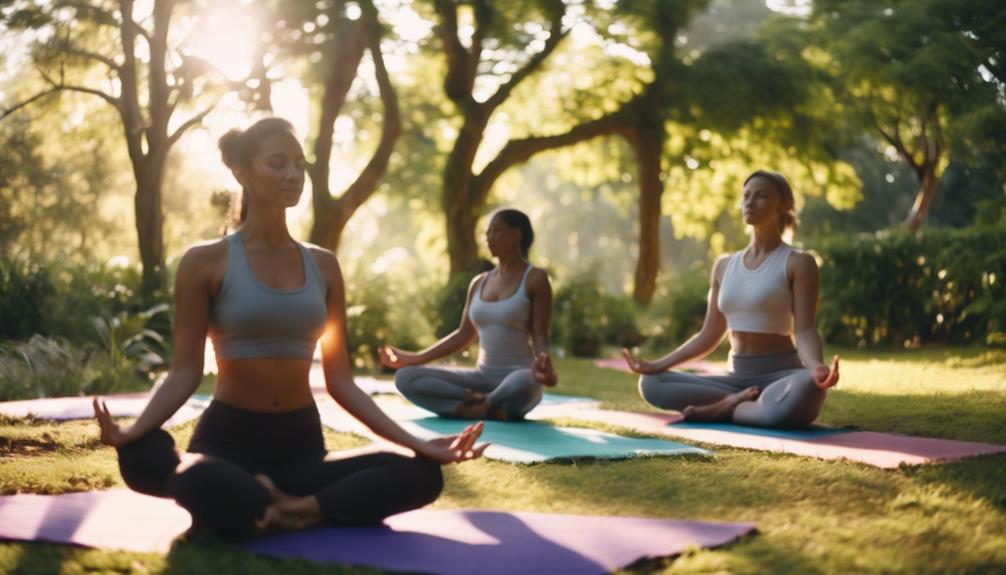Flying Yoga

What is Flying Yoga?
Flying yoga, also known as aerial yoga, is an innovative fitness practice that combines traditional yoga poses with the use of a suspended fabric hammock. This unique approach allows practitioners to explore yoga in a three-dimensional space, offering a thrilling experience that enhances flexibility, strength, and balance. By incorporating the hammock, flying yoga enables participants to achieve poses that may be challenging on the ground, providing a new perspective on familiar asanas. Whether you’re a seasoned yogi or a beginner, flying yoga promises a transformative experience that can elevate your fitness journey.
The Physical Benefits of Flying Yoga
Engaging in flying yoga offers numerous physical benefits that can significantly enhance your overall well-being. Firstly, the practice helps improve flexibility as the hammock supports your body in various positions, allowing for deeper stretches and greater range of motion. As you flow through poses, you’ll also build core strength, which is crucial for maintaining balance and stability in all physical activities. Additionally, flying yoga can alleviate tension in the spine, promoting better posture and reducing back pain. This combination of strength, flexibility, and spinal health makes flying yoga an ideal workout for individuals of all fitness levels.
Mental Wellness Through Aerial Practice
Beyond the physical aspects, flying yoga plays a vital role in mental wellness. The practice encourages mindfulness and meditation by promoting a sense of calm and focus. As you suspend in the air, it allows you to let go of distractions and engage in self-reflection. The gentle swaying motion of the hammock can also induce relaxation, helping to reduce stress and anxiety. By cultivating a strong mind-body connection, flying yoga can enhance your emotional resilience and overall mental health, making it a fantastic addition to your wellness routine.
How Flying Yoga Improves Balance and Coordination
Balance and coordination are essential components of physical fitness, and flying yoga provides an excellent platform to develop these skills. As you navigate through various poses while suspended, you’ll challenge your body’s stability and proprioception—your awareness of where your body is in space. This heightened awareness translates to improved performance in other physical activities, such as dancing, sports, and even everyday movements. Regular practice can lead to better body alignment and coordination, ultimately enhancing your overall functional fitness.
Related Posts:
Finding the Right Flying Yoga Class for You
When it comes to flying yoga, not all classes are created equal. It’s essential to find a class that suits your skill level and personal preferences. Beginners should seek out classes specifically designed for novices, where instructors prioritize safety and foundational skills. Look for studios that offer small class sizes, allowing for individual attention and guidance. As you become more comfortable, you can explore intermediate or advanced classes that challenge your skills further. Always consult with the instructor about any health concerns or limitations to ensure a safe and enjoyable experience.
Essential Equipment for Flying Yoga
To practice flying yoga, you’ll need a few essential pieces of equipment. The most critical item is the aerial hammock itself, which should be made of high-quality, durable fabric that can support your weight. Additionally, you’ll want to invest in a yoga mat to provide grip and comfort during grounding poses. Some practitioners may also choose to wear special aerial clothing that allows for free movement and prevents fabric from slipping. Finally, a water bottle is essential for staying hydrated throughout your practice. With the right equipment, you’ll be well-prepared to enjoy the benefits of flying yoga.
Safety Tips for Practicing Flying Yoga
Safety should always be a top priority when practicing flying yoga. Before starting, ensure that the hammock is securely installed and able to support your weight. Always listen to your body and avoid pushing yourself into poses that feel uncomfortable or painful. It’s advisable to practice under the guidance of a qualified instructor, especially if you’re new to aerial yoga. Additionally, consider consulting with a healthcare professional if you have any pre-existing conditions or concerns. By taking these precautions, you can enjoy a safe and rewarding flying yoga experience.
Incorporating Flying Yoga into Your Fitness Routine
Integrating flying yoga into your fitness routine can offer a refreshing change of pace from traditional workouts. Aim to practice flying yoga at least once a week to reap the maximum benefits. You can complement your aerial sessions with other forms of exercise, such as strength training, cardio, or ground-based yoga, for a well-rounded fitness regimen. Many practitioners find that flying yoga enhances their performance in other activities, leading to improved strength and flexibility overall. By embracing this unique practice, you can elevate not just your fitness journey but your overall quality of life.
In conclusion, flying yoga is an exciting and beneficial practice that can transform your approach to fitness and wellness. With its myriad of physical and mental benefits, it’s no wonder that aerial yoga has gained popularity among fitness enthusiasts. Whether you’re seeking to improve flexibility, build strength, or find mental clarity, flying yoga offers a versatile workout that caters to all levels. So why not take flight and discover the transformative power of flying yoga today?Yogi BareDoes Oxygen Yoga Help You Lose Weight